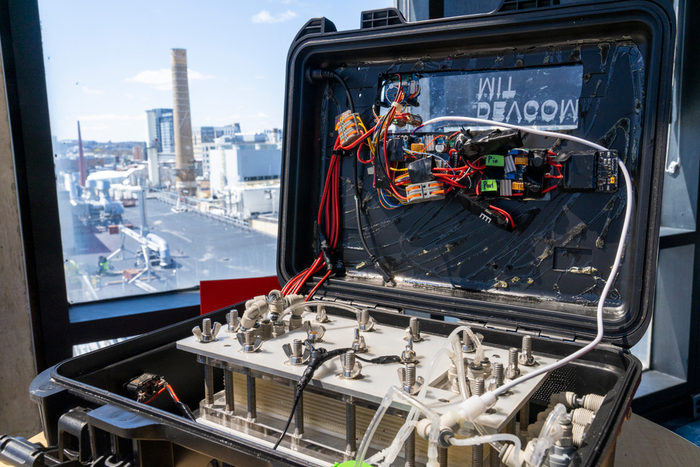May 02 2022
Portable Desalination
According to the WHO , one third of the people in the world lack access to safe drinking water. They report that, “Globally, at least 2 billion people use a drinking water source contaminated with faeces.” Some locations (like the island of Bermuda) lack any supply of fresh water, and depend largely on rainwater. While a lot of progress has been made over the last few decades, this remains a huge problem. It is also likely to be exacerbated by global warming and an increasing population. A proper sanitation infrastructure is the ideal solution, but in the meantime anything that can supplement supplies of drinkable water will help.
, one third of the people in the world lack access to safe drinking water. They report that, “Globally, at least 2 billion people use a drinking water source contaminated with faeces.” Some locations (like the island of Bermuda) lack any supply of fresh water, and depend largely on rainwater. While a lot of progress has been made over the last few decades, this remains a huge problem. It is also likely to be exacerbated by global warming and an increasing population. A proper sanitation infrastructure is the ideal solution, but in the meantime anything that can supplement supplies of drinkable water will help.
One technology that has been around for decades and is often pointed to as a potential solution is desalination, taking the salt out of salt water. If we can economically do this, then we could just get our fresh water supply from the ocean or from brackish sources. There are plenty of commercial options available, like this one, that uses reverse osmosis and filtration to desalinate and purify water. Even in developed nations desalination plants are becoming more common, as demand increases, and also to create a reliable local source even during times of drought. California has 11 such plants, like this one north of San Diego that produces 50 million gallons of fresh water per day.
There is also a use for small portable desalination options in poor or remote regions that lack access to centralized sources of clean water. Portable options can also be useful during disasters, or when demand spikes due to heat waves or droughts. Portable “suitcase” sized desalination devices already exist and can be purchased commercially. The SeaWater Pro, for example, costs about $6,000 and comes in a portable hard case. It comes in two options, a plug-in and one run by a lithium-ion battery. The battery option could also be paired with a portable solar panel, which range from a couple of hundred to a few thousand dollars depending on how much power you need. This device produces 10 gallons of fresh water per hour, or 240 gallons per day (if plugged in). That is enough to serve a few families or even a small village.
A recent study examines a new approach to portable desalination, using “multistage electromembrane processes, composed of two-stage ion concentration polarization and one-stage electrodialysis.” The study demonstrates that the technology works, producing drinkable water up to the WHO standard starting with either brackish water or sea water. The advantage of this system is that it does not require filters, so nothing that needs to be regularly replaced. It is therefore a more independent system. A battery-based system has been field tested, and the authors report that: “The demonstrated portable desalination system is unprecedented in size, efficiency, and operational flexibility.”
There does appear to be one massive downside, however. They also report a “0.33 L/h production rate.” That is one liter every three hours, or 8 liters per day with around-the-clock operation (which is not possible for a battery-powered unit, unless there are multiple swappable batteries). In other words, the SeaWater Pro produces 114 times as much fresh water as this new design (10 gallons vs .33 liters which is 0.088 gallons). One of these units would barely meet the needs of a single person per day (about 3 liters per day).
We are only at the prototype stage at this point, but that is the point of a prototype, to see what the potential of the technology is. Hopefully more mature designs can increase the output somewhat, but I doubt it will increase it by two orders of magnitude. Still this technology may serve a niche, if they can be made small, durable, and cheap enough. The fact that they don’t require replacement filters means they could fill a gap where this would be an issue. I would like to see an analysis of how much water each system produces per unit energy. The availability of energy may be a limiting factor in locations that would benefit from this technology. Given the fact that both systems can operate off of their lithium-ion battery for a few hours implies that the filter-based system is also much more energy efficient. So the question would be – are you going to plug your only portable solar panel into the system producing 10 gallons per hour or 0.088 gallons per hour?
Unless this electromembrane technology can solve the small output problem, it may just be easier to provide lots of replacement filters. But it is still useful to pursue new technologies and new ways of doing things. Most will not work out, because there are so many deal-killer problems that can crop up. But it is also hard to predict where new technology may lead, and it’s a good way to hedge our bets.






